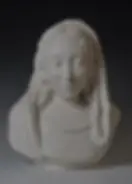
MOFSA
MOFSA exists to support artists who create works that inspire peace within individuals and between disparate communities. We are not bound to any particular religious creed, rather we hope to encourage artists as they pursue their own spiritual path.

Featured Sculptures by Marianne Oberg
"Spiritual art is not a static object, however beautiful or sublime, but a catalyst that awakens in the participant feelings, thoughts and inspirations leading to appreciation, creation or transformation. The natural world is creative and spiritual."
-- Bob Oberg, Founder MOFSA
The Foundation
The Marianne Oberg Foundation for Spiritual Art (MOFSA) is a 501(c)(3) organization whose mission is to inspire, encourage and support the creation of spiritual art. Why a foundation for spiritual art? What drives us? We appreciate art in all forms as an expression of the human spirit. In our world today that spirit is beset by problems at every hand, poverty, violence, and even the destruction of the environment which sustains us. Healing at every level is desperately needed. Art can be not only a personal expression of the artist but can be a powerful catalyst to bring about the very transformation that can heal us and our world. We have this vision:
The Marianne Oberg Foundation for Spiritual Art exists to support artists who create works that inspire peace within individuals and between disparate communities. MOFSA is not bound to any particular religious creed, rather we hope to encourage artists as they pursue their own spiritual path.
The core way in which we pursue our mission is through grants to artists. We also endeavor to support exhibits of spiritual art. MOFSA was inspired by the life and continuing spiritual presence of Marianne Oberg.
Marianne and Spiritual Art
Marianne had a calling to create spiritual art, which she described in a 2007 letter–
“I have found that verbal spiritual teachings have a tendency to become degraded over time and misinterpreted and misunderstood. I believe that this tendency is minimized when a spiritual teaching is transmitted via artwork (for example Egyptian and Tibetan and Indian and Mesoamerican art and the paintings of Nicholas Roerich).
“I want to embody the unity of all spiritual teachings in my clay sculpture. The idea came to me that angels are a component of most spiritual teachings so I am working on a long-term project to embody the abstract angelic visions I see when I meditate into clay. The airy quality of angels and the earthy grounded clay don’t mix too well (but part of what I want to do is ground this energy in the everyday world) so I have had numerous technical problems and will undoubtedly have lots more. I have a personality that goes well with a long-term project so this is OK.”
Marianne’s Life, Art, and Spirituality
Marianne was born in Chicago in 1949. She grew up in Illinois, an only child in a working class family. Her mother had picked cotton as a child, and her father was a machinist. With aid of a National Merit Scholarship she attended Knox College in Galesburg, Illinois majoring in mathematics and graduated with honors in June, 1971. She did graduate study in mathematics at Clark University in Worcester, Massachusetts 1971 – 1972. On October 7, 1972 she married Robert Oberg, whom she met at Knox College while she was a student and he was a professor.
She did graduate studies in psychology at Brandeis University in Waltham, Massachusetts 1977 – 1978. After that she decided to devote herself to the arts. She had learned various handcrafts from her mother and grandmother. She enrolled in and completed a two-year program in professional craft studies in weaving at the Worcester Craft Center. She began doing clay in addition to weaving and did some experiments in mixed media. She studied ceramics at De Cordova Museum and Mudflat Studio in Massachusetts.
Beginning in the 1980s, Marianne explored many spiritual teachings. Branching out from a Unitarian-Universalist community, she practiced Zen mediation, studied Theosophy and Tibetan Buddhism and enrolled in the B.O.T.A correspondence lessons. She studied the curriculum of the Servants of the Light mystery school, becoming a second-degree initiate. Zen was a very deep practice for Marianne, including both daily zazen and occasional weekend sesshin retreats. Her teacher was Maurine Stuart, who studied in Japan. Marianne would probably have stayed with Zen as a permanent practice, but Maurine died in 1990. In the last years of her life she found a new spiritual path in Spiritism. Most Spiritist books are written in Portuguese, so she began study of that language, completing all three levels of the Rosetta Stone course.
Marianne’s preferred medium for artistic expression was clay hand-building and sculpture. Her work included lizards, frogs and other animals, fanciful pinch pots, sculpture in a Mesoamerican or Egyptian style, ritual pieces, and experiments in abstract angelic forms. Two of her latest pieces were a tower based on the Tarot card and an octopus vase. Her later work was done at Clayworks and Mint Hill Arts in North Carolina. She was also accomplished at sewing and needlepoint and stitched many beautiful canvases.
Marianne had a lifelong love of birds, and in 2011 she volunteered to help in the rehabilitation of birds at the Carolina Raptor Center. During the spring 2012 photo shoot at the Raptor Center, she took over 1000 photographs, which she could cull for a series of bird sculptures. The first piece was to be an owl. Her desire was to capture the dynamic quality of birds and use this experience for future work in angelic forms. Her long range goal was to create spiritual art.
Marianne died in 2012 of injuries suffered from a vehicle accident and this foundation has been created in her memory.
